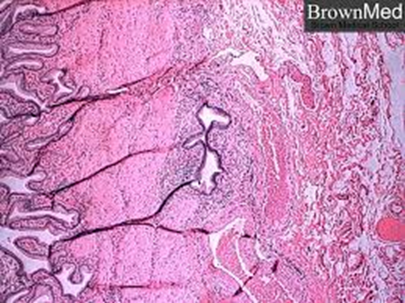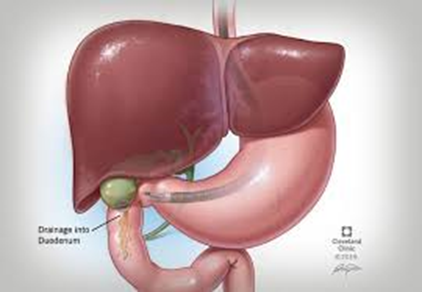Cholecystitis
Overview
Gallbladder and bile
duct
Cholecystitis
(ko-luh-sis-TIE-tis) is inflammation of the gallbladder. Your gallbladder is a
small, pear-shaped organ on the right side of your abdomen, beneath your liver.
The gallbladder holds a digestive fluid that's released into your small
intestine (bile).
In most cases, gallstones
blocking the tube leading out of your gallbladder cause cholecystitis. This
results in a bile buildup that can cause inflammation. Other causes of
cholecystitis include bile duct problems, tumors, serious illness and certain
infections. These causes will be
discussed in more detail below.
If left untreated,
cholecystitis can lead to serious, sometimes life-threatening complications,
such as a gallbladder rupture. Treatment for cholecystitis often involves
gallbladder removal.
Symptoms
Signs and symptoms of cholecystitis may
include:
Severe pain in your upper
right or center abdomen
Pain that spreads to your
right shoulder or back
Tenderness over your abdomen
when it's touched
Nausea
Vomiting
Fever
Cholecystitis signs and
symptoms often occur after a meal, particularly a large or fatty one.
When to see a doctor
Make an appointment with
your doctor if you have worrisome signs or symptoms. If your abdominal pain is
so severe that you can't sit still or get comfortable, have someone drive you
to the emergency roo
Causes
Cholecystitis occurs when
your gallbladder becomes inflamed. Gallbladder inflammation can be caused by:
Gallstones.
Most often, cholecystitis is the result of hard particles that develop in your
gallbladder (gallstones). Gallstones can block the tube (cystic duct) through
which bile flows when it leaves the gallbladder. Bile builds up, causing
inflammation.
Tumor. A
tumor may prevent bile from draining out of your gallbladder properly, causing
bile buildup that can lead to cholecystitis.
Bile duct blockage.
Kinking or scarring of the bile ducts can cause blockages that lead to
cholecystitis.
Infection.
AIDS and certain viral infections can trigger gallbladder inflammation.
Blood vessel problems. A
very severe illness can damage blood vessels and decrease blood flow to the
gallbladder, leading to cholecystitis.
Risk factors
Having gallstones is the main risk factor for developing cholecystitis.
Complications
Cholecystitis can lead to a
number of serious complications, including:
Infection within the
gallbladder. If bile builds up within your gallbladder,
causing cholecystitis, the bile may become infected.
Death of gallbladder tissue.
Untreated cholecystitis can cause tissue in the gallbladder to die (gangrene).
It's the most common complication, especially among older people, those who
wait to get treatment, and those with diabetes. This can lead to a tear in the
gallbladder, or it may cause your gallbladder to burst.
Torn gallbladder. A tear
(perforation) in your gallbladder may result from gallbladder swelling,
infection or death of tissue.
Prevention
You can reduce your risk of
cholecystitis by taking the following steps to prevent gallstones:
Lose weight slowly. Rapid
weight loss can increase the risk of gallstones. If you need to lose weight,
aim to lose 1 or 2 pounds (0.5 to about 1 kilogram) a week.
Maintain a healthy weight.
Being overweight makes you more likely to develop gallstones. To achieve a
healthy weight, reduce calories and increase your physical activity. Maintain a
healthy weight by continuing to eat well and exercise.
Choose a healthy diet. Diets
high in fat and low in fiber may increase the risk of gallstones. To lower your
risk, choose a diet high in fruits, vegetables and whole grains.
Jan Ricks Jennings, MHA, LFACH$
Jan.JenningsBlogBlogspot.com
412.913.0636 Cell
724733.0509 Office
April 26, 2022




No comments:
Post a Comment